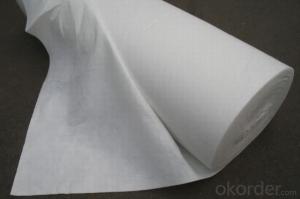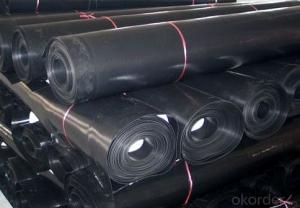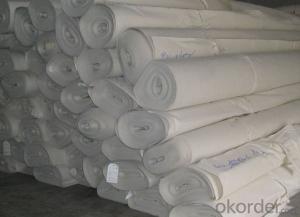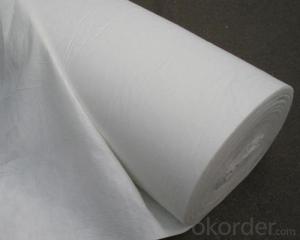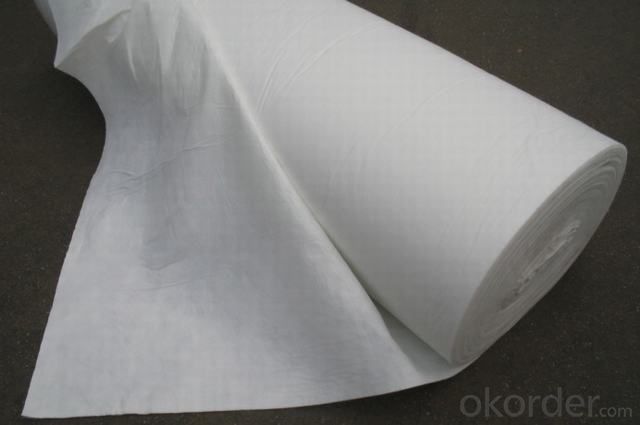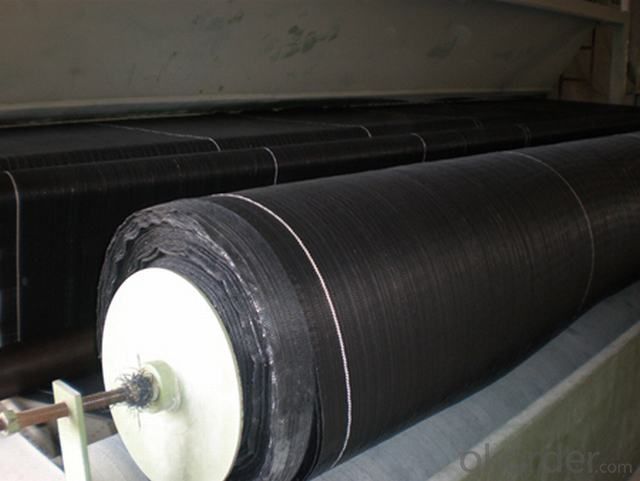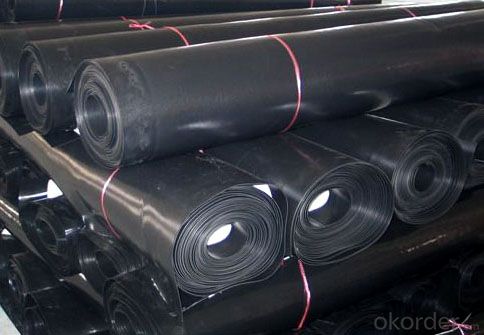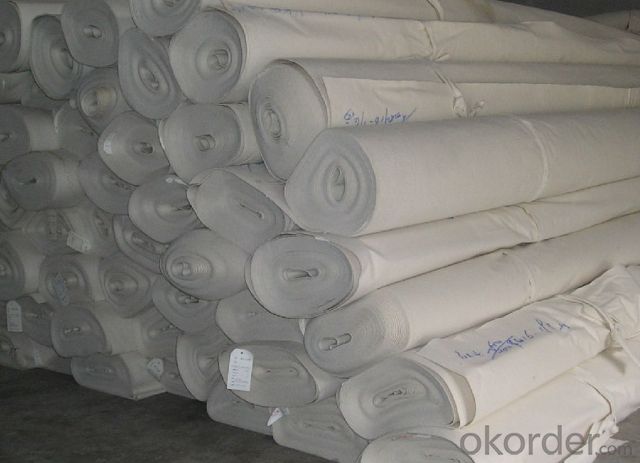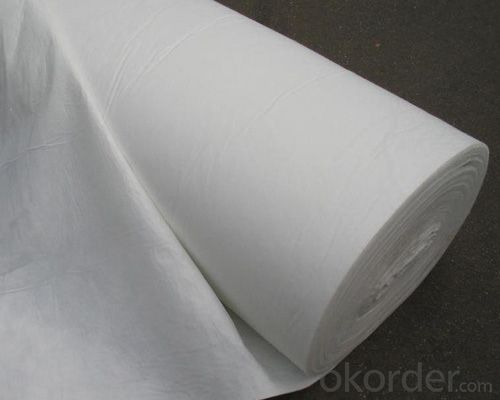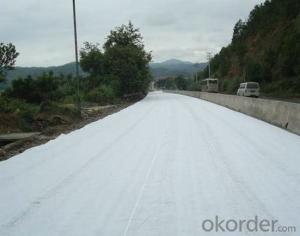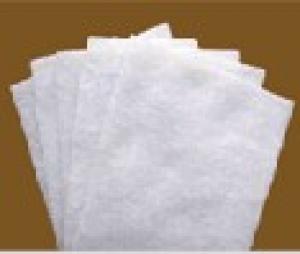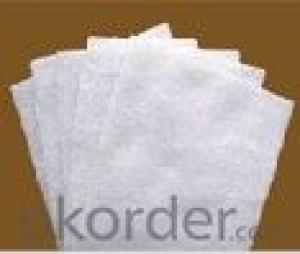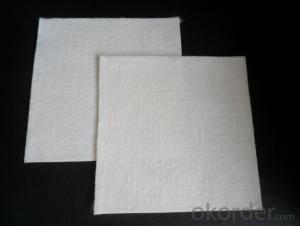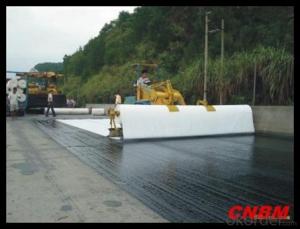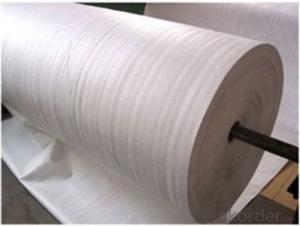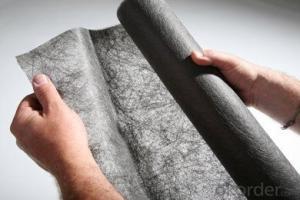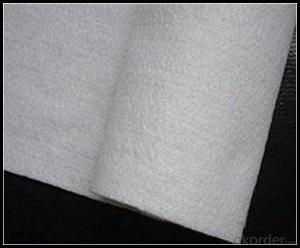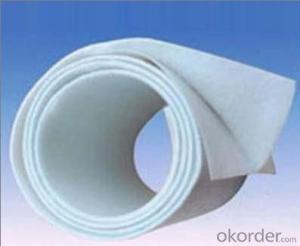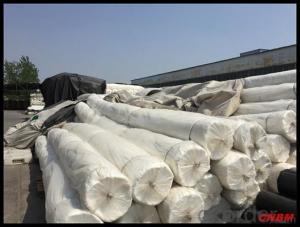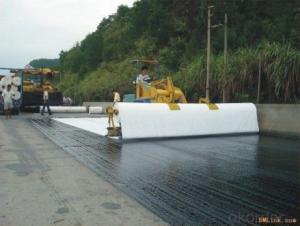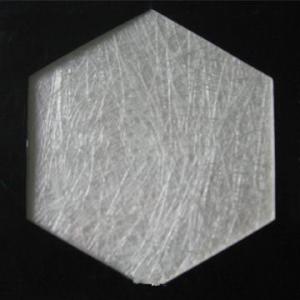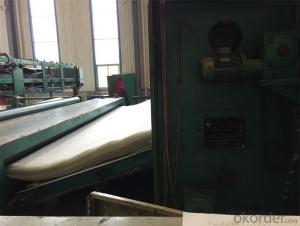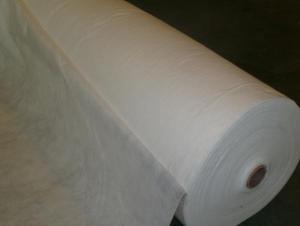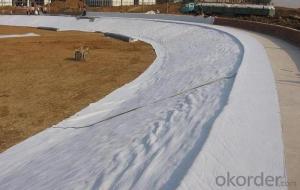Geotextile Filter Fabric French Drain for Pet Woven Geotextile in Drainage Applications
- Loading Port:
- Qingdao
- Payment Terms:
- TT OR LC
- Min Order Qty:
- 20000 m²
- Supply Capability:
- 1500000 m²/month
OKorder Service Pledge
OKorder Financial Service
You Might Also Like
Specifications of PET Woven Geotextile Used for Drainage Application:
Filament Spunbond
High Tensile, Strength,Easy
Polyester Geotextile Fabric
In-house, OEM accept
Long Fiber, Staple Geotextile
Characteristic of PET Woven Geotextile Used for Drainage Application:
1. High strength: using high strength industrial polypropylene, Dacron, Chinlon etc. as the fiber raw materials that has higher original strength. And then, weaving formed a textile through a certain way and its comprehensive bearing capacity reaches a higher level.
2. Durability: Synthetic fiber is stable in physical property and is not easy going to decomposing & weathering.
3. Corrosion resistance: Synthetic fiber always has good characteristic like acid-resisting, alkali-resisting, damage from insects & mold.
4. Water Permeability: Woven geotextile can control effectively its opening in structure and reach a certain permeability.
5. Easy for Store & Transport: It is easy to store and transport owing to its light weight and certain package.
Application of PET Woven Geotextile Used for Drainage Application:
1. It is a series industrial products of geo-material that suit for all kinds of characteristics & requirements in Geotechnical engineering and is widely used in rivers, coast, road, railway, dock, tunnel, bridge and so on. Most important, it can reach all different applications.
2. In order to guarantee stable & balanced structure and reach all engineering data, all our woven geotextile produced by import width shuttleless loom to guarantee quality.
3. The series of products is filter, brace, anti-skidding, mould bags etc.
- Q: Are geotextiles effective in preventing soil contamination?
- Yes, geotextiles are effective in preventing soil contamination. They act as a protective barrier between the soil and potential contaminants, such as pollutants or invasive species. Geotextiles help to filter and separate different soil layers, preventing the migration of harmful substances and maintaining the integrity of the soil. Additionally, they can aid in soil stabilization and erosion control, further reducing the risk of contamination.
- Q: What are the factors to consider when designing with geotextiles?
- When designing with geotextiles, there are several factors that need to be considered. These include the specific application or purpose of the geotextile, the physical and mechanical properties of the geotextile, the site conditions and environmental factors, the installation methods and techniques, and the long-term performance and durability requirements. Additionally, factors like cost, availability, and compatibility with other materials should also be taken into account during the design process.
- Q: Can geotextiles be used in the construction of landfills?
- Yes, geotextiles can be used in the construction of landfills. Geotextiles are often used as a barrier or separator material in landfill construction to help with soil erosion control, filtration, and drainage. They can also enhance the stability and overall performance of the landfill by preventing the mixing of different layers and providing reinforcement.
- Q: Are geotextiles resistant to UV degradation?
- Yes, geotextiles are generally resistant to UV degradation. They are designed to withstand exposure to sunlight and other environmental factors, ensuring their durability and longevity in various applications.
- Q: What glue glue is used at the seams of the impervious geotextile
- What glue glue is used at the seams of the impervious geotextile
- Q: What is the difference in role of earth anchors and geotextiles in the construction of retaining wall?
- Geotextiles prevent the infiltration of the natural, insitu soil into sand or structural gravel that you may place as a foundation to the retaining wall. You can think of it as a membrane that keeps the two types of material of different densities, from gradually mixing together. A free standing retaining wall will likely not be successful as the pressure of the retained soil behind the wall will build up due to settlement, and eventually cause the wall to topple. Earth anchors that tie into the wall and extend into the backfill material (retained earth) serves to support the wall and keep it from failing.
- Q: What is the purpose of using geotextiles in construction projects?
- The purpose of using geotextiles in construction projects is to enhance soil stability, reinforce weak soil, improve drainage, prevent soil erosion, and provide separation and filtration between different soil layers or materials.
- Q: Geotextile and geogrid difference
- Different geotextile used to prevent seepage, geogrid used to reinforce the geotextile is mainly used to seepage, isolation, geogrid are generally used in reinforced reinforcement, the two are essential differences in the use of the process Sometimes used in the same project, such as high-speed, railway and other engineering production grid is made of polypropylene, polyvinyl chloride and other polymer polymer by thermoplastic or molded two-dimensional grid or a certain height of the three-dimensional Dimensional grid grid, when used as a civil engineering, known as geogrid. Engineering applications: roads, railways, abutments, approach roads, docks, dams, slag and other soft soil foundation reinforcement, retaining walls and road surface cracking engineering and other fields. Fiberglass mesh used in the external walls, wall paint, the main material to prevent the junction of different mortar and other plastering material cracking, hollowing. Local node reinforcement will also be used. Geotextile has excellent filtration, drainage, isolation, reinforcement, anti-seepage, protection, with light weight, high tensile strength, good permeability, high temperature, anti-freeze, anti-aging, corrosion resistance. Common non-woven fabrics, water layer inside the use, polyethylene polypropylene waterproof also used.
- Q: What are the different geotextile installation guidelines?
- There are several different geotextile installation guidelines that vary depending on the specific project and goals. Some common guidelines include ensuring proper site preparation, including clearing and grading the area, as well as removing any debris or vegetation. It is important to properly measure and cut the geotextile to fit the designated area, allowing for overlap and securing the edges. Additionally, proper anchoring methods should be used to prevent movement or displacement of the geotextile. Finally, regular inspection and maintenance should be conducted to ensure the geotextile is functioning as intended.
- Q: What are the advantages of using geotextiles in shoreline stabilization?
- Geotextiles offer several advantages in shoreline stabilization. Firstly, they provide effective erosion control by preventing soil erosion and minimizing sediment transport. Secondly, they enhance the stability and strength of the shoreline, reducing the risk of collapse or slumping. Additionally, geotextiles allow for better drainage and water filtration, which helps maintain a healthy ecosystem by preventing stagnant water and promoting the growth of vegetation. Moreover, they are easy to install and maintain, making them a cost-effective solution for shoreline stabilization projects. Lastly, geotextiles are environmentally friendly as they are typically made from recycled materials and can be easily removed or replaced if necessary.
Send your message to us
Geotextile Filter Fabric French Drain for Pet Woven Geotextile in Drainage Applications
- Loading Port:
- Qingdao
- Payment Terms:
- TT OR LC
- Min Order Qty:
- 20000 m²
- Supply Capability:
- 1500000 m²/month
OKorder Service Pledge
OKorder Financial Service
Similar products
Hot products
Hot Searches
Related keywords
